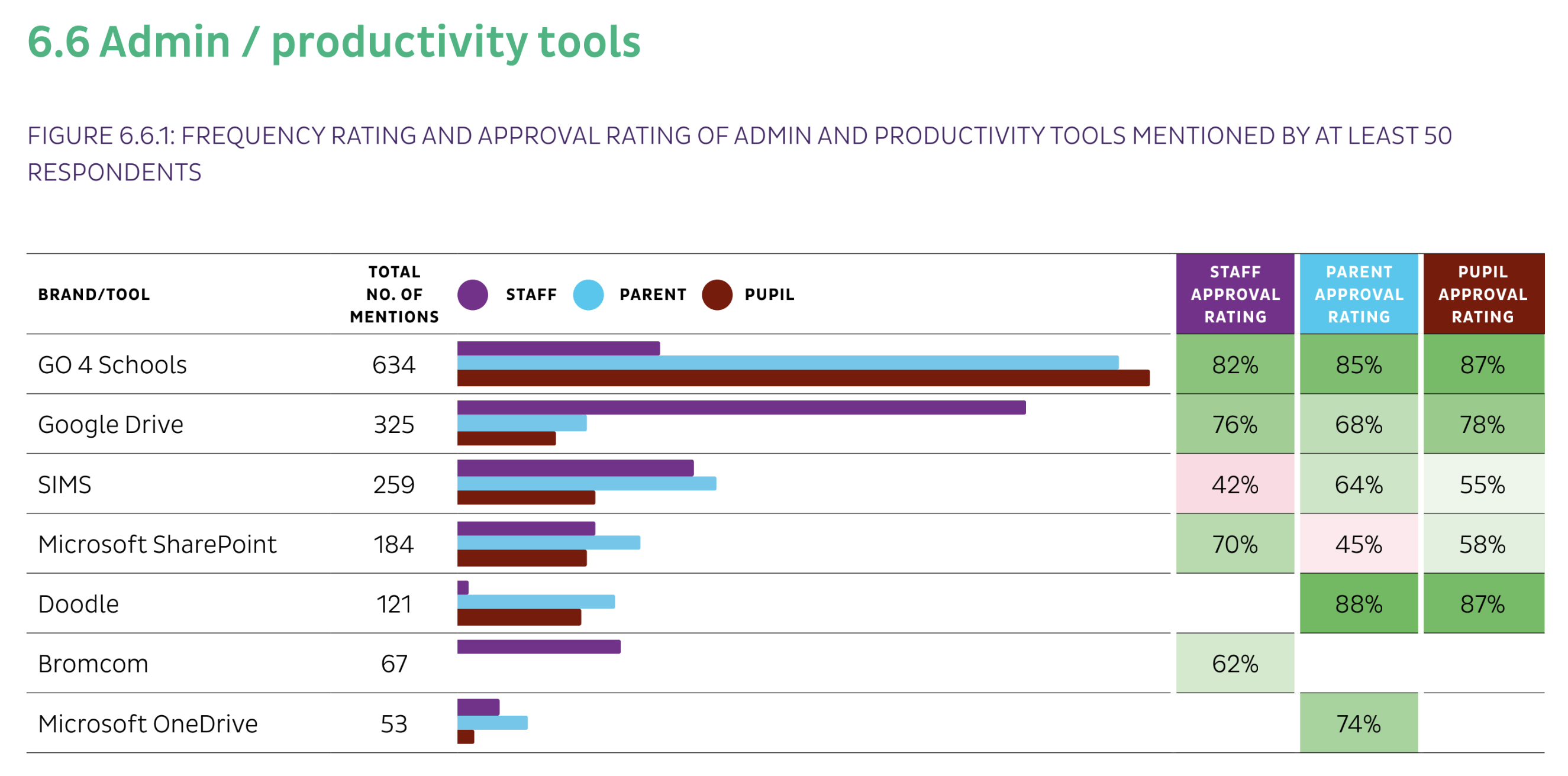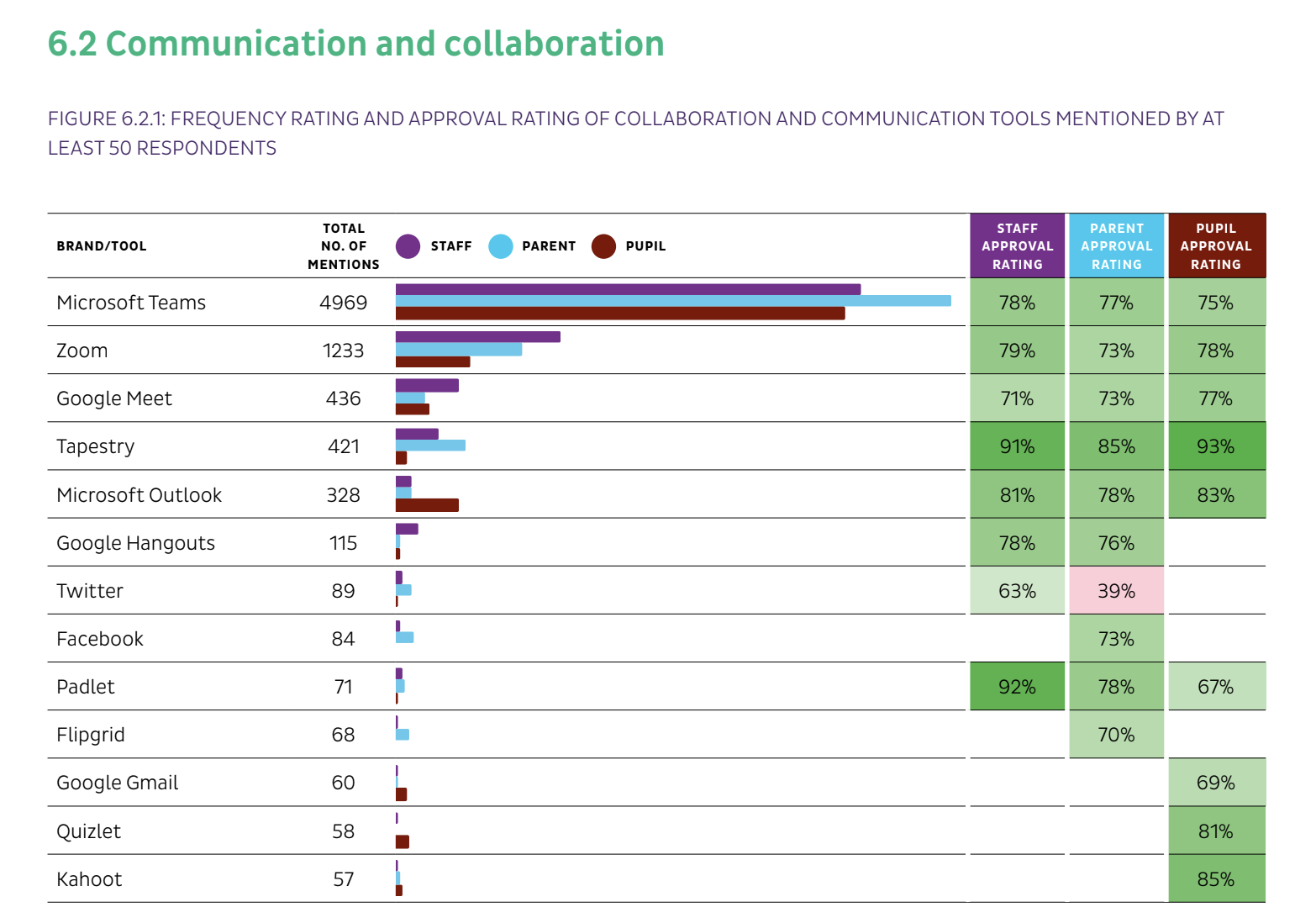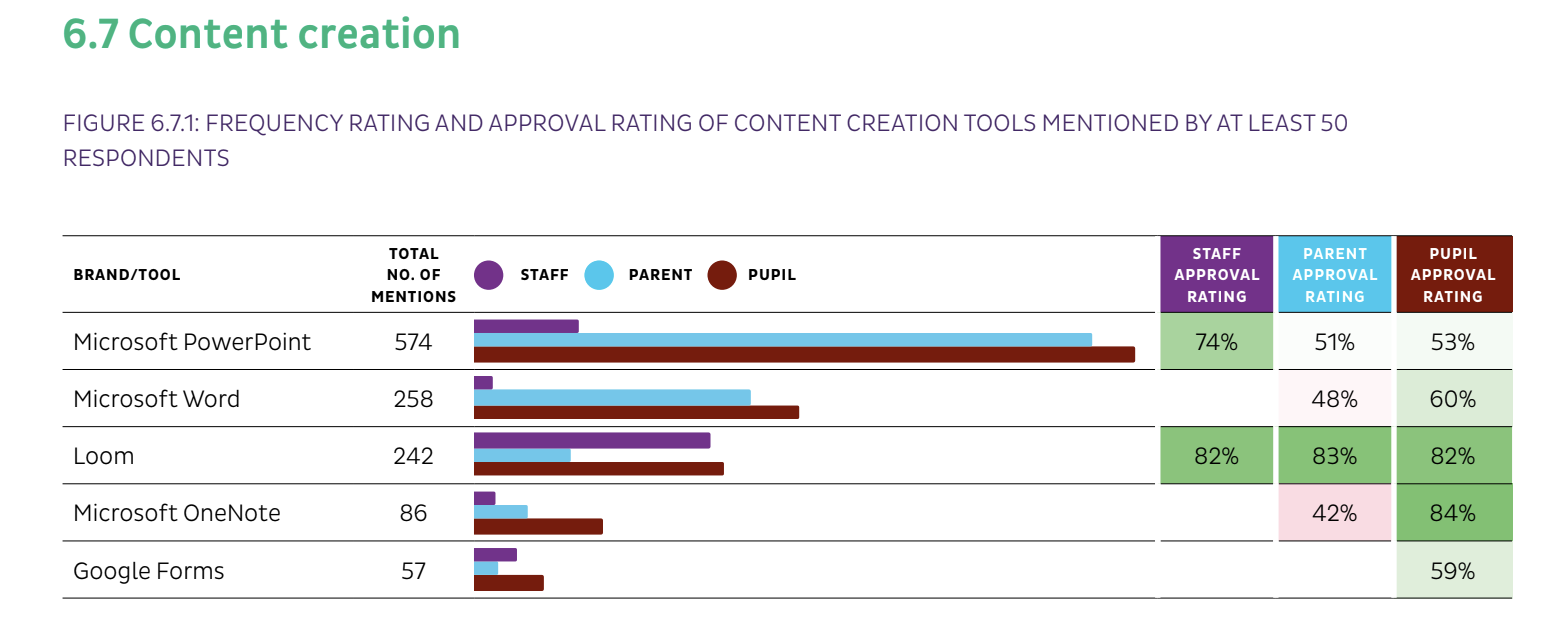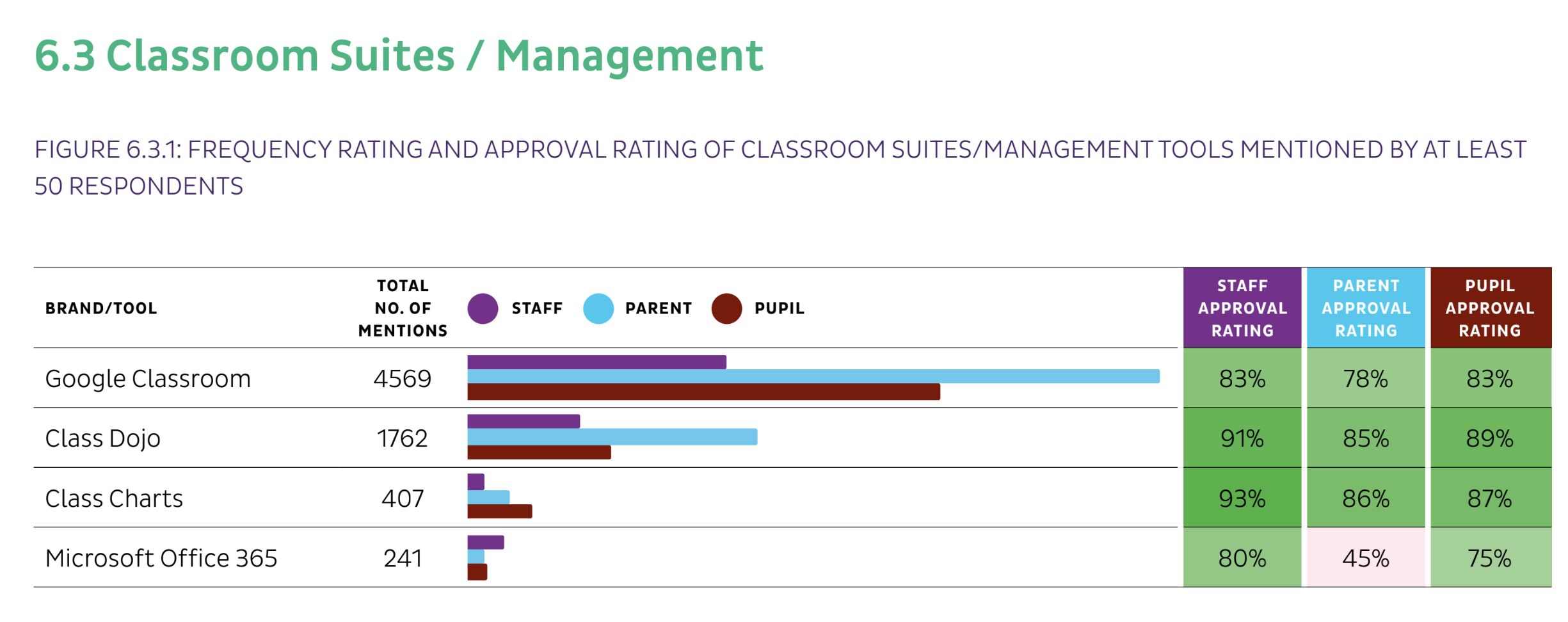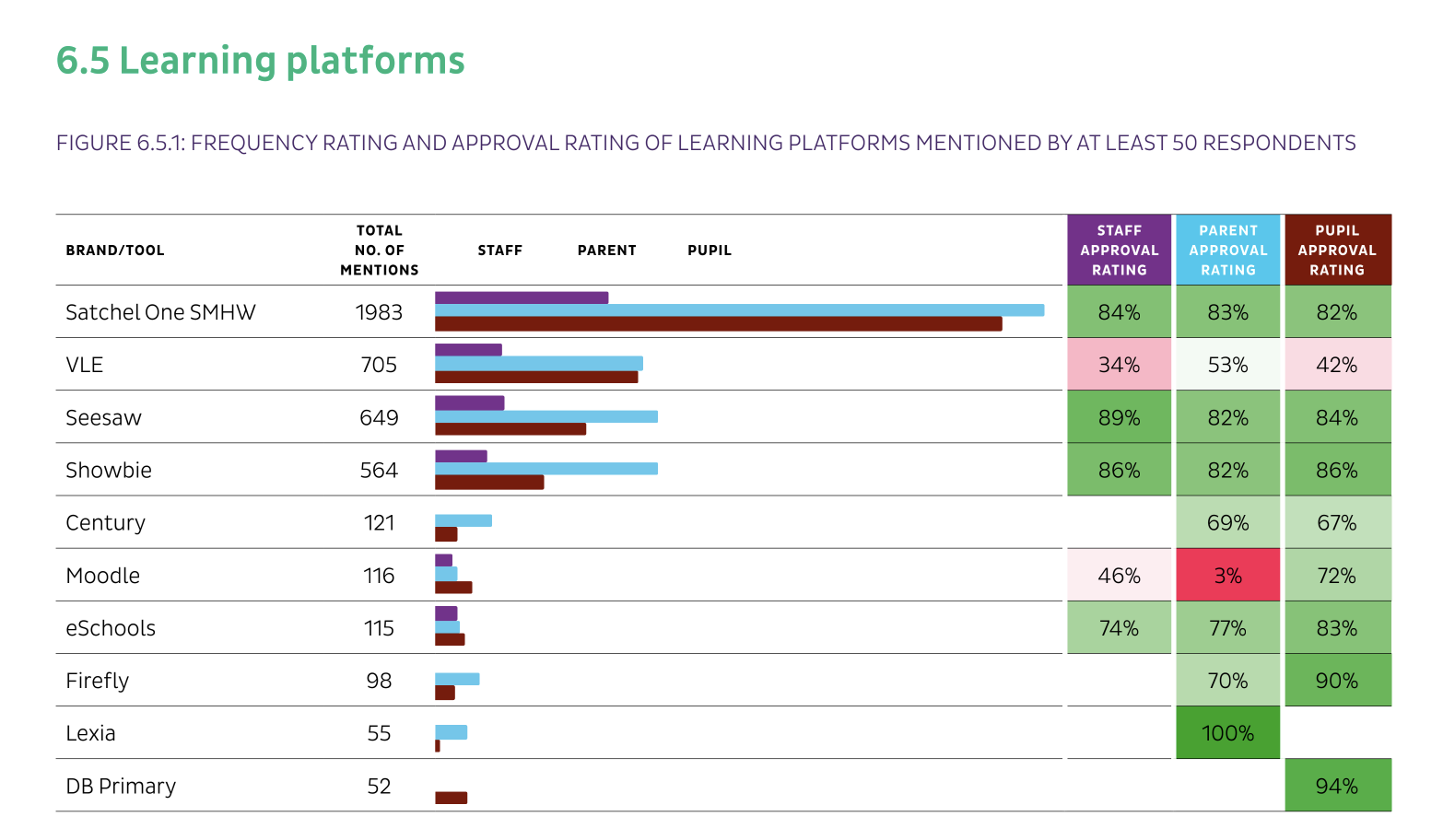13 May, 2022
Educational tools
Here we look at what digital educational tools are helpful for schools and trusts, and why you may want to use them now.
Educational Tools to Benefit Trusts and Schools
For many years now, tech companies like Apple, Google and Microsoft have told us that whatever we are looking for, from games to banking to finding a new home, “there’s an app for that”. And in the education sector, it is no different; whatever your school or trusts need, there’s an educational tool for that.
Educational apps can support communication with a school or trust’s community, create an interactive learning process for pupils, robust teaching tools and generally assist with an organisation’s day to day admin. The onset of COVID-19 and the shift to remote learning accelerated the use of technology, building on existing, but sometimes neglected, online infrastructure to continue teaching during a period of huge disruption.
In our report, ‘Technology Use in Schools During Covid-19‘, we reflected on this surge in adoption of educational technology, asking schools and trusts about their use of digital technology compared to before the pandemic. The interest in educational tools was clear, with 61% of staff responding by saying they had been using a mixture of learning tools they’d used before and new tools, and 19% saying they’d mainly used new learning tools.
Our research shed light on which tools had worked best to support remote learning, looking at the mentions and approval ratings of three respondent groups: staff, pupils and parents. The digital tools we assessed were grouped into the following categories:
- Admin and Productivity
- Communication and Collaboration
- Content Creation
- Classroom Suites/Management
- Online Content
- Learning Platforms
In this post, we’ll be looking at why these apps are helpful for schools and trusts, how our respondents felt about using them during COVID-19’s period of remote learning and why your organisation may want to use them now.
Admin and Productivity Tools for Schools and Trusts
GO 4 Schools
Great for parental engagement.
GO 4 Schools is an online system which allows schools and trusts to easily share up-to-date information on pupils’ education with their parents and carers. This platform works in tandem with school websites and integrates with various functions allowing important notes on school life and pupil activities with little hands-on activity. For example, parents can print their child’s report from home in a downloadable PDF. There’s perhaps no surprise that the app was the most mentioned by pupils and parents in our report on technology.
Google Drive
Liked by school staff!
Google Drive is a great way to organise and collaborate on many day-to-day activities such as planning, creating documents, and sharing work in schools and trusts. For those who aren’t aware of the benefits of Google Drive, this digital tool stores files on one server, which can be easily shared across an organisation. Shared servers are great for collaborating with staff across a trust. However, in an education setting, Google Drive is useful for storing files, collaboratively working on projects, or providing feedback and revisions using Google Docs.
In our research, Google Drive was well-known among staff as it was the most mentioned in our data set. Surprisingly, it was far more likely to be mentioned by any stakeholder group than Microsoft’s OneDrive.
Apps for Communication and Collaboration in Education
Kahoot
Useful for both primary and secondary schools.
Kahoot is a game-based learning platform that delivers and presents topics to pupils in interactive and engaging ways, through games, fun quizzes and multiple-choice questions. It is described as an excellent tool for communication, collaboration, critical thinking and formative assessment.
Back in 2020, when we launched our findings, Kahoot did gain one of the highest pupil approval ratings 85%, but with little mention from each of our respondents in our 2020 report. However, Kahoot is an incredibly popular educational app which is mentioned time and time again online. In 2021, a primary school teacher in the UK surveyed on Instagram and Twitter of primary teachers, asking them to share the top apps used in their school’s classrooms. In Mr Minchin’s findings, Kahoot ranked in the top 9 apps used by primary school teachers.
Padlet
Great for teachers wanting to give autonomy to students while still being able to facilitate conversations.
Padlet is an education tool that allows learners to collaborate online by posting text, images, links, documents, videos and voice recordings. Our data found that Padlet was the highest rated by staff as it scored an approval rating of 92%. There’s no surprise why it’s a favourite of staff, considering it’s useful for allowing students to create their own content and share it online on post-it boards. Padlet can also be opened from a smartphone or a computer making it more accessible to students at home and in school.
Content Creation Tools For Pupils
These two pieces of software from Microsoft had the most mentions from parents and pupils in our data set for content creation!
Microsoft PowerPoint
This tool has been around for years and has been one of the most known apps for creating slideshows; it’s simple, functional and easily accessible on most mobile devices or computers. In an educational setting, PowerPoint can be used to create presentations for both lesson plans or notes and homework presentations. 1 in 5 staff mentioned using this app in our findings!
Of course, there is always a great Google alternative, Google Slides, should your organisations prefer the Google Drive.
Microsoft Word
Also known as Word or MS Word, this app is usually the go-to in most organisations, especially schools and trusts within the UK. Staff and pupils alike are able to use this tool to write and format documents great for in class and in the office side of things.
Our 2020 report mainly dealt with the split between Google and Microsoft products. Yet, more recently, when it comes to more creative and less traditional content creation tools, it appears the rising use of iPads in primary schools, has led to schools using Apple apps more, including iMovie for filming and editing.
What does your school or trust use most Apple, Google or Microsoft?
Supporting Classroom Management with Technology
Google Classroom
Ideal for staff – especially teachers.
Google Classroom is an app made for helping the creation, distribution and grading of classroom assignments by streamlining the process of sharing files between teachers and students. Similar to Google Drive, but explicitly made with schools in mind.
During Covid, it is perhaps unsurprising that Google Classroom was the most frequently mentioned tool in relation to classroom management by both primary and secondary teachers, parents and pupils.
Class Dojo
Perfect for primary schools.
This tool is an online behaviour management system which can be used to foster and reinforce positive student behaviours and classroom culture. Primary school pupils often enjoy this, as they can earn ‘Dojo Points’ based on their classroom conduct via their teacher’s instant feedback . Teachers can also use Class Dojo to keep parents up to date on what is happening and pupil progress and behaviour.
Class Dojo attracted a substantial proportion of all mentions by primary teachers in our technology during the remote learning report, as well as over 900 parent and 500 primary pupil mentions. Overall, all three respondent groups (staff, parents and pupils) gave this tool a very high approval rate.
Educational Online Apps
MyMaths
Suitable for pupils of all ages.
This online tool allows pupils to do maths work in an interactive setting both in the classroom and at home and is often used as an extra resource for mathematics work from primary school right through to A-Level. It’s also beneficial for teachers as assessments are self-marked, allowing them to track pupil progress and come with ready-made lessons quickly using MyMaths templates.
MyMaths appeared a firm favourite across the board as it scored among the highest in approval ratings from all three respondent groups in the Online Content section of our report.
Seneca
Excellent revision support for pupils!
Using a variety of text, flashcard notes and videos, this revision app provides an interactive and engaging revision tool for pupils. Suitable for K2 upwards, Seneca is a platform which has been designed to give students support both during term time and while revising for exams. School staff and parents can also monitor how a pupil spends their time with information on time spent learning, average score, sessions completed and correct answers.
Seneca was the most commonly mentioned site by secondary staff in our findings regarding online revision sites for GCSE and A-Level subjects. Parents and teachers in particular, praised this app highly, with staff giving it a 99% approval rating.
Platforms which Encourage Learning
Interesting to note that both these apps mainly were mentioned and used by primary schools – according to our data!
Satchel One
Ideal for secondary schools.
This app helps parents stay up to date with homework by providing an online homework calendar their children can use to keep track of all their homework and student progress. Teachers can utilise this app by creating and publishing pupils’ homework within the platform from here; the child can then manage their submissions and view their previous submissions’ marks. Satchel One also makes it easy for parents to access this information by providing it online and in an app suitable for IOS and Android.
It also appears Satchel One has stood the test of time since remote learning in 2020, as this year it’s been mentioned as a market-leading learning platform used by 1 in 3 secondary schools in the UK.
Seesaw
A platform for student engagement.
This online platform enables teachers to build a digital portfolio for each pupil, and teachers can create tasks, reflect and share stimuli for pupils to respond using photos, videos, PDFs and more. This platform also incorporates parental engagement features, which may explain their approval among parents. Our findings discovered this platform was one of the mentioned within the learning platforms category, being well-received by staff, parents and pupils alike.
The interactive options of Seesaw make it great for engaging younger pupils, too. One primary teacher found it useful to facilitate a blogging session with her Year 6s.
Bonus Educational Platform for School Leaders
Edurio
Most-effective tool for schools to make evidence-based decisions.
Our web platform allows school groups to administer and analyse feedback surveys from students, parents, teachers, governors, and trustees to continuously improve the quality of education. Once we’ve gathered your respondents’ experiences, we share them with you in simple executive summaries, answer-by-answer breakdowns, visually interesting matrix and word cloud views. If you’d like to learn more about what schools and trusts do after gathering stakeholder feedback with Edurio, read more about our partner trusts’ experiences here.

